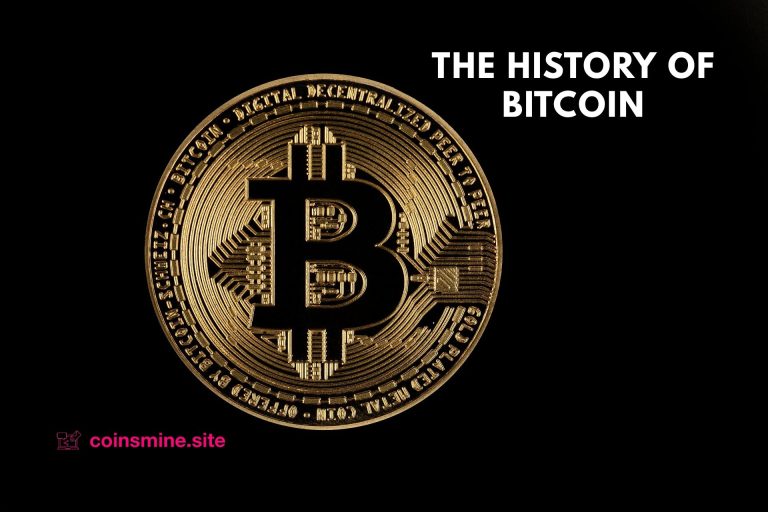The History of Bitcoin: From an obscure concept in a 2008 white paper, Bitcoin—the first decentralized digital currency in history—has grown into a major global financial phenomenon. Bitcoin, which was developed by the enigmatic Satoshi Nakamoto, proposed a ground-breaking idea.
From early cryptography forum experiments to corporate and even national adoption, its path has been characterized by creativity, disagreement, instability, and tenacity. Knowing the history of Bitcoin provides important insight into the development of money in the digital era, as it continues to disrupt conventional finance and provoke discussions around the globe.
The History of Bitcoin: From Cypherpunk Dream to Global Phenomenon.
The history of Bitcoin, the first decentralized digital currency in history, is brief yet dramatic. From its obscure origins in forums for cryptography to its current status as a trillion-dollar asset class. Here’s a detailed look at its beginnings and future directions.
The Origins: A Cypherpunk Vision.
Digital currency is not a brand-new concept. Many members of the cypherpunk movement were among the computer scientists and cryptographers who were investigating methods to provide safe, private, and decentralized banking systems long before Bitcoin.
That issue was not resolved until 2008, when a whitepaper titled “Bitcoin: A Peer-to-Peer Electronic Cash System” was published by an enigmatic individual going by the name Satoshi Nakamoto. It presented a revolutionary solution.
2009: The Genesis Block.
Its code contained the following message:
This was an overt allusion to the 2008 global financial crisis, indicating that Bitcoin was intended to serve as a substitute for the established banking system.
The majority of early users were software developers and cryptography aficionados who saw Bitcoin as a means of achieving financial independence. Through online forums, Nakamoto interacted with these early users, answering their queries and helping them improve the program. After giving the reins to other developers, he abruptly vanished from the internet in late 2010.
2010–2012: Early Growth and Real-World Use.
Those 10,000 bitcoins would now be worth hundreds of millions of dollars
Around this time, Bitcoin exchanges started to appear, such as the notorious Mt.
The concept of a non-governmental currency also attracted the interest of libertarians, computer enthusiasts.
2013–2017: Mainstream Attention and Legal Scrutiny.
Due to increased awareness and media attention, Bitcoin first reached the $1,000 mark in late 2013. But it also began to be linked to illegal behavior, particularly through the Silk Road, a darknet bazaar where users could use Bitcoin to purchase illegal goods. In the end, Silk Road was shut down by the US government.
Bitcoin kept gaining popularity in spite of the debate. Global regulators started to take note, sparking a flurry of legal arguments on whether Bitcoin belongs in the property, money, or commodity categories.
Bitcoin reached unprecedented heights in 2017. The euphoria from retail investors and the surge in initial coin offerings (ICOs), or fundraising campaigns utilizing cryptocurrency tokens. For the first time, Bitcoin garnered institutional attention during its first significant bull run.
2018–2020: The Crypto Winter and Institutional Entry.
Following the 2017 bubble, Bitcoin had a protracted decline known as the “crypto winter.” Many saw it as a fad, prices fell, and projects flopped. However, significant infrastructure was being constructed in the background. As traditional finance started experimenting with blockchain technology, companies like Coinbase, Binance, and Square extended their offerings.
The description of Bitcoin changed in 2020 from being merely “online money” to “digital gold”—a protection against inflation and the depreciation of fiat money. The COVID-19 pandemic caused central banks to create large amounts of money, which rekindled institutional investors’ interest in Bitcoin.
2021–Present: Institutional Adoption and Global Debates.
In November 2021, Bitcoin reached its highest price to date, $69,000. Businesses like MicroStrategy and Tesla, as well as governments like El Salvador, started purchasing Bitcoin as a national currency or reserve asset.
Meanwhile, market volatility, governmental crackdowns, and worries about energy use kept Bitcoin in the news. While some nations have outlawed or restricted its usage, others have welcomed it.
Its supply is set at 21 million, its network has never been compromised, and it remains a representation of freedom and decentralized finance in the digital era.
Conclusion.
It has transformed from a specialized experiment to a worldwide financial asset in just over ten years. Regardless of whether you see Bitcoin as a speculative bubble, a game-changing technology.



